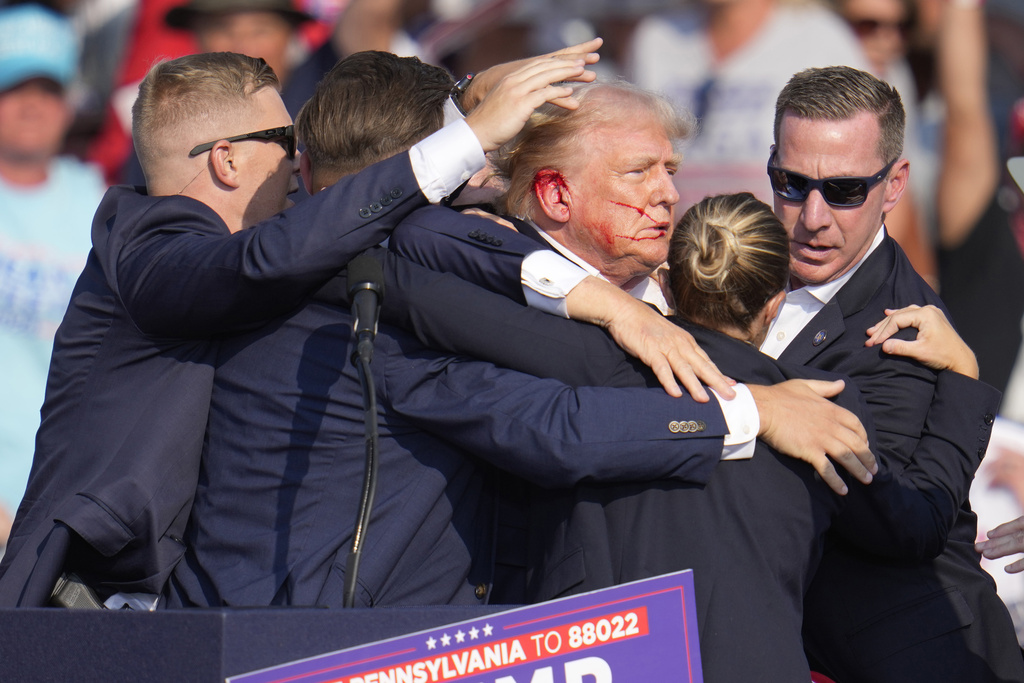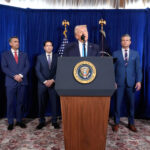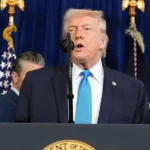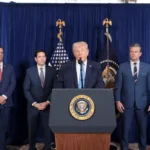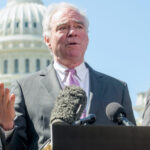Secret Service Critique for Security Failures During Trump Shooting \ Newslooks \ Washington DC \ Mary Sidiqi \ Evening Edition \ A new report highlights serious security lapses by the Secret Service during a July rally where former President Donald Trump was shot and wounded. Communication breakdowns, complacency, and failure to address vulnerabilities left Trump exposed to sniper fire from an unsecured roof. The investigation has raised concerns about the agency’s protocols, especially following a recent stalking incident at a Florida golf course.
Secret Service Failures at Trump Rally: Quick Looks
- Communication Failures: A report outlines communication breakdowns between local law enforcement and the Secret Service during the July 13 rally where Trump was shot, hampering efforts to stop the gunman.
- Missed Security Measures: Despite identifying the rally site as a security risk, the Secret Service failed to fix line-of-sight issues that allowed the gunman to fire from an unsecured roof.
- Gunman Incident: The shooter, Thomas Matthew Crooks, fired eight rounds at Trump before being killed by a Secret Service sniper; prior warnings about the site’s vulnerability were ignored.
- Complacency and Lack of Coordination: Some Secret Service agents were complacent, and local law enforcement did not properly communicate with federal agents during the incident, according to the report.
- Paradigm Shift Needed: Acting Secret Service Director Ronald Rowe Jr. called for major changes in how the agency handles public event security, citing this incident and a recent stalking case in Florida.
Deep Look:
The Secret Service is facing harsh criticism for a series of security failures that allowed a gunman to shoot and wound former President Donald Trump at a campaign rally in Butler, Pennsylvania on July 13. A newly released report exposes communication breakdowns and missed opportunities that left Trump vulnerable to attack, raising questions about the agency’s preparedness and protocols. The findings come amid heightened scrutiny following a recent stalking incident involving Trump at a Florida golf course.
The five-page report summarizes the conclusions of an ongoing investigation into the shooting, where Thomas Matthew Crooks, a 20-year-old gunman, opened fire from the roof of a building near the rally site. The Secret Service had identified potential security risks at the rally, but critical vulnerabilities were left unaddressed, and communication lapses between federal and local law enforcement played a major role in the breach.
Communication and Security Breakdowns
One of the most significant failures highlighted in the report is the lack of coordination between the Secret Service and local law enforcement. According to Ronald Rowe Jr., the agency’s acting director, there was an absence of clear guidance for local police, and some officers were unaware of communication centers at the rally site. Local law enforcement overly relied on cell phones rather than Secret Service radio frequencies to share critical information, which caused delays and fragmented communication. Officers searching for Crooks before the shooting shared details “via mobile/cellular devices in staggered or fragmented fashion” instead of using the Secret Service’s secure radio network.
This breakdown in communication left Trump’s protective detail in the dark about the developing threat. The report states that had the Secret Service been aware of how focused state and local officers were on finding the suspicious individual on the roof, they might have made the decision to relocate Trump during the search.
The lack of direct communication between the tactical team and the Secret Service was another serious oversight. A local tactical team had been positioned on the second floor of the building where Crooks was hiding, but there was no coordination with the Secret Service about potential threats from the roof. The tactical team’s deployment was arranged by a local police department without the knowledge of federal agents, contributing to the lack of a coordinated response.
Failure to Address Security Vulnerabilities
The rally site, chosen by Trump’s team to accommodate a large crowd, posed numerous security challenges. The Secret Service had identified line-of-sight vulnerabilities that could be exploited by a sniper, yet no effective security measures were implemented. The roof where Crooks fired from had been flagged as a potential hazard before the event, but no law enforcement was stationed there to monitor it.
Despite these warnings, the site’s risks were not properly escalated to supervisors, and some Secret Service agents demonstrated what Rowe described as “complacency” in addressing the situation. Rowe emphasized that while some members of the advance team were diligent, others failed to act on the security concerns, leading to a breach of protocols that allowed Crooks to gain access to the roof and open fire.
The gunman fired eight rounds in Trump’s direction before he was killed by a Secret Service counter-sniper. Trump was struck in the ear, and the incident, which could have been far worse, has prompted serious concerns about the Secret Service’s performance during high-risk public events.
Internal Investigation and Accountability
While many of these failures have been previously reported through news investigations and congressional testimony, the newly released summary represents the Secret Service’s most formal acknowledgment of the cascading errors that occurred that day. The full report is still being finalized, and it remains unclear whether any individual Secret Service agents will face discipline as a result. However, at least five agents have been placed on modified duty, and Kimberly Cheatle, who was the agency’s director at the time, resigned a week after the shooting, taking responsibility for the security lapses.
Rowe, who has since taken over as acting director, said that the agency is committed to learning from the mistakes of July 13. “This was a failure on the part of the United States Secret Service. It’s important that we hold ourselves to account for the failures of July 13th and use the lessons learned to make sure that we do not have another failure like this again,” Rowe stated during a news conference about the report’s findings.
The Secret Service’s investigation is one of several probes into the incident, including inquiries by Congress and a watchdog investigation by the Department of Homeland Security’s Inspector General. These investigations aim to uncover the full scope of the failings that led to the security breach and ensure that such incidents are prevented in the future.
Lessons for Future Security Protocols
Rowe has pointed to the July 13 shooting and a more recent incident involving 58-year-old Ryan Wesley Routh, who was arrested after allegedly stalking Trump at a golf course in West Palm Beach, Florida, as evidence that the Secret Service needs a “paradigm shift” in how it handles public official protection. Routh was caught after agents noticed a rifle poking through shrubbery near the course where Trump was playing, and Rowe praised the swift response as an example of procedures working as intended.
Despite these recent challenges, Rowe assured the public that Trump is receiving the “highest levels” of protection, and the Secret Service is making adjustments to avoid future failures. Moving forward, the agency will likely implement new security measures and training to prevent similar communication breakdowns and ensure that agents are fully equipped to handle high-risk situations at public events.
Secret Service Critique Secret Service Critique Secret Service Critique

